The situation in the eastern part of the Northern Sea Route in 25 October – 17 November
In 2021, the end of the summer-autumn navigation season on the NSR turned out to be difficult, especially in the eastern part. There is only one nuclear icebreaker Vaygach in the water areas of the Laptev and East Siberian Sea, that needs to assist all vessels (details of the vessels listed below the article) in the current challenging ice conditions. It is worth noting that there are many vessels in the eastern area of the NSR this year. CHNL analyzed the development of the situation from the end of October to 15 November. A brief overview of what is happening is presented below. When preparing the report, we used, among other things, data from the telegram channel t.me/sibirskiyokean
At the end of October, ships heading to the port of Pevek from the west – Andrey Pervozvanniy, RZK Constanta and Georgy Sedov – moved together with partial support of icebreaker Taymyr in the Kara Sea.
Soon thereafter, the vessel Nordic Nuluujaak (transit voyage) and Turukhan (heading to Pevek) passed the Vilkitskiy Strait with the support of icebreaker Vaygach. Early in the morning of October 28, Vaygach turned towards the west and headed to the Kara Sea to escort the 3 ships to Pevek.
Simultaneously another transit ship Golden Suek, already in the Laptev Sea, was moving independently eastward. Nordic Nuluujaak and Turukhan continued slowly eastward closer to Golden Suek, north of Kotelnyy Island. At the same time Grigoriy Shelikhov and SMP Severodvinsk were already in the East Siberian Sea waiting for icebreaker assistance towards Pevek.
On 2 November, Golden Suek joined the convoy of ib Vaygach, Andrey Pervozvanniy, RZK Constanta and Georgy Sedov. The ib Vaygach, first escorted Golden Suek to join the other transit vessel Nordic Nuluujaak and then returned northward to escort the group of ships to Pevek.
On 3rd November ib Vaygach was escorting Andrey Pervozvanniy, RZK Constanta, Georgy Sedov, Grigoriy Shelikhov and SMP Severodvinsk in convoy towards the port of Pevek.
By 4 November, the transit vessel UHF Fusion approached the Laptev Sea from the west, followed by 2 other transit vessels Nordic Qinngua and Golden Pearl.
On the morning of 5 November, Vaygach left the port of Pevek, went to the Long Strait and took the west bound Selenga under escort, supported it approximately to the Pevek traverse and returned to the Long Strait to help the transit bulker Kumpula pass to the west.
By the evening of 8 November, 4 transit vessels, Nordic Qinngua, Golden Pearl, Golden Suek and Nordic Nuluujaak were located in close proximity east of the Novosibirsk Islands. UHL Fusion (transit ship) in the area of Kotelniy Island.
At the end of 10 November, Vaygach again took Selenga together with Kumpula under escort and led them to the west. On the way, they were joined by Severniy Proect which was waiting for the icebreaker in the East Siberian Sea after leaving the port of Pevek. By the evening of 12 November, Vaygach supported these 3 ships in the western direction to the Novosibirsk Islands, where the transit vessel UHL Fusion, was located.
Thereafter, all 5 transit vessels were escorted in convoy eastward at a speed of about 6 knots. At the time of preparing this report (the evening of November 17), the speed has dropped to 1-2 knots. The transit vessels are located approximately 140 miles northwest of Pevek.
4 ships heading to the west (Severnyy Proekt, Selenga, Kumpula and the tanker Vladimir Rusanov) are located north of Kotelnyy Island. Waiting for icebreaker escort to west direction.
The Grigoriy Shelikhov, RZK Constanta, SMP Severodvinsk, Turukhan, Radik Bashirov and Georgiy Sedov are still located within the port area of Pevek. The diesel icebreaker Novorossiysk is escorting the FESCO Paris to the port of Pevek from the east. Nuclear icebreaker Yamal left Murmansk on 16th November and is now moving into the NSR area.
It is worth noting that the nuclear container vessel Sevmorput has passed the East Siberian Sea on the same dates without icebreaker support and will soon leave the water area of the NSR making its transit voyage without delays.
Based on the above analysis of the ships’ movements over the past few days the conclusion is that no vessel has been left without assistance despite the currently difficult situation. That said, it is obvious that one icebreaker alone even if employed in a logical and effective way cannot handle such a situation without delays.
The need to wait for icebreaker assistance on the NSR towards the end of the NSR season, a period of intense ice formation, is a risk and therefore not totally unexpected. Despite the general trend of global warming, the Arctic is still the Arctic with changing ice and weather patterns from year to year. The unfolding situation confirms the need for a sufficient number of icebreakers so that even the end of the NSR season becomes predictable for the users.
One of the causes for this situation, in our opinion, was the very late delivery of goods to the port of Pevek. Even if there were no transits, the task of navigating all ships without delay to Pevek and back would be difficult.
The situation of the transit passages and the departure of ships from Pevek is not yet finished. Only when all the ships have left the water area of the NSR, we will be able to get the final figures for the delays caused by this year’s ice conditions and the consequent waiting for the icebreaker.
CHNL will follow and report regularly on these developments.
Details of the vessels:


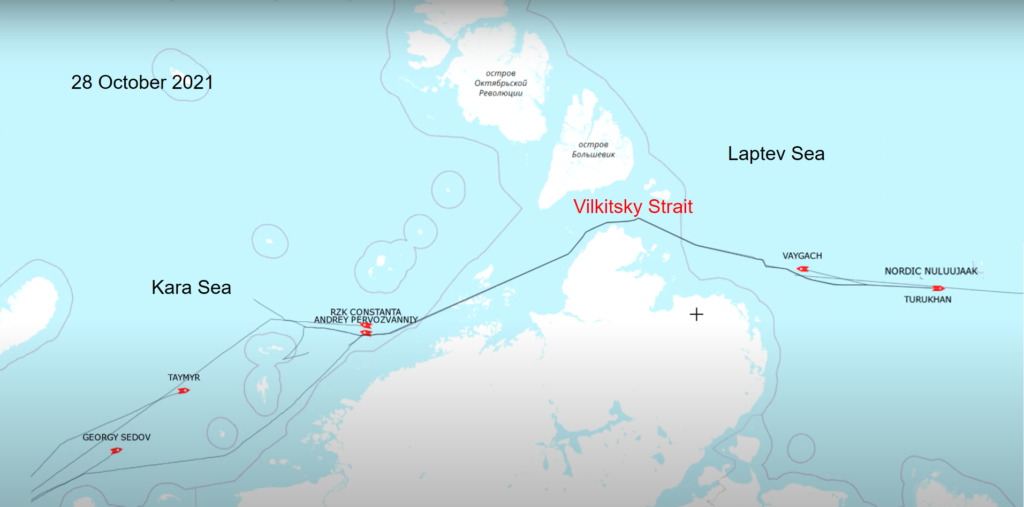
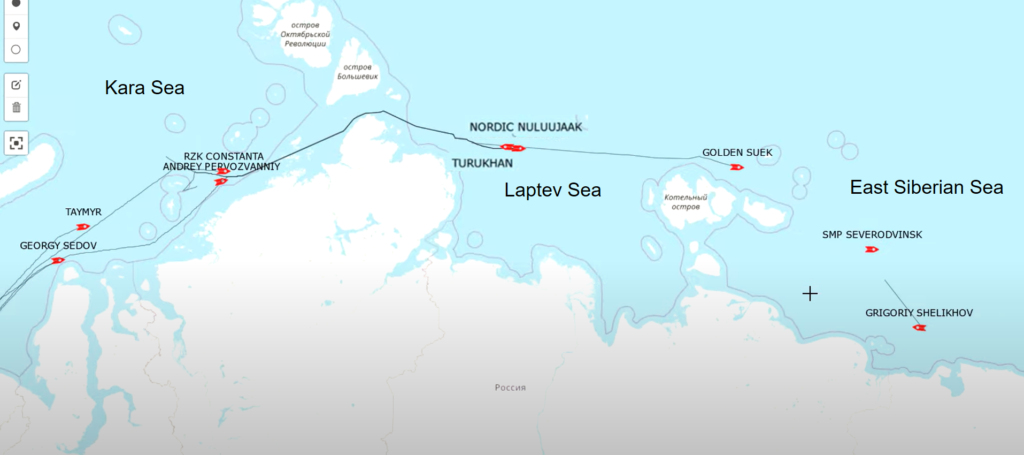
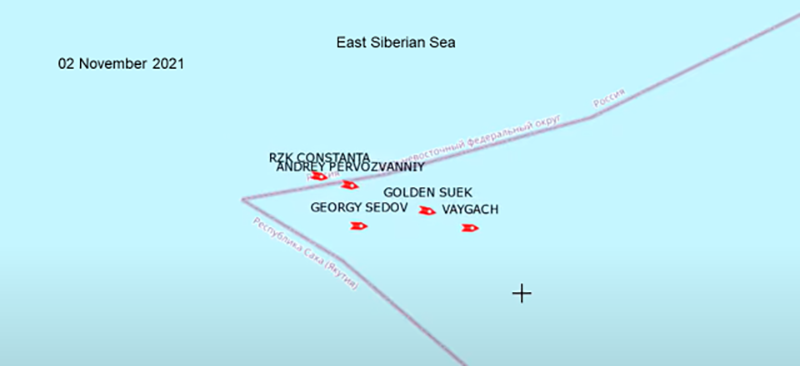



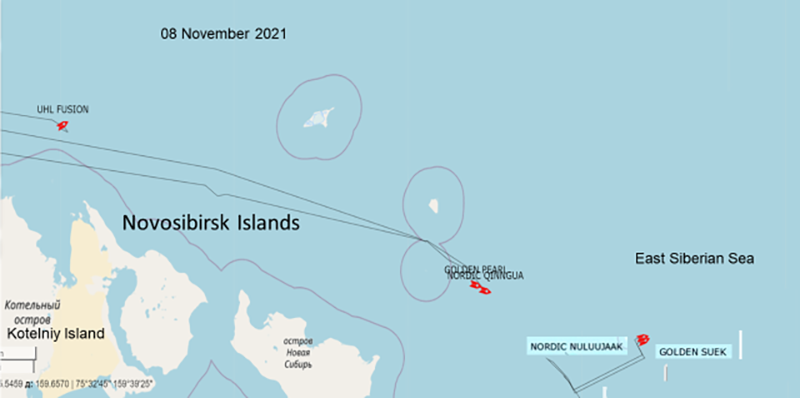
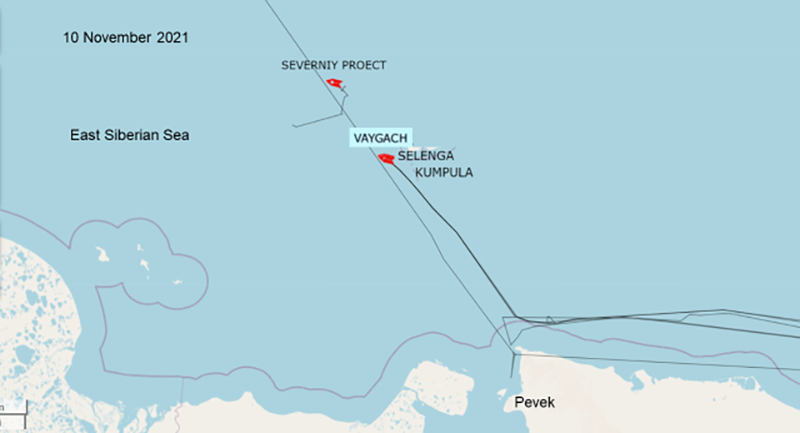
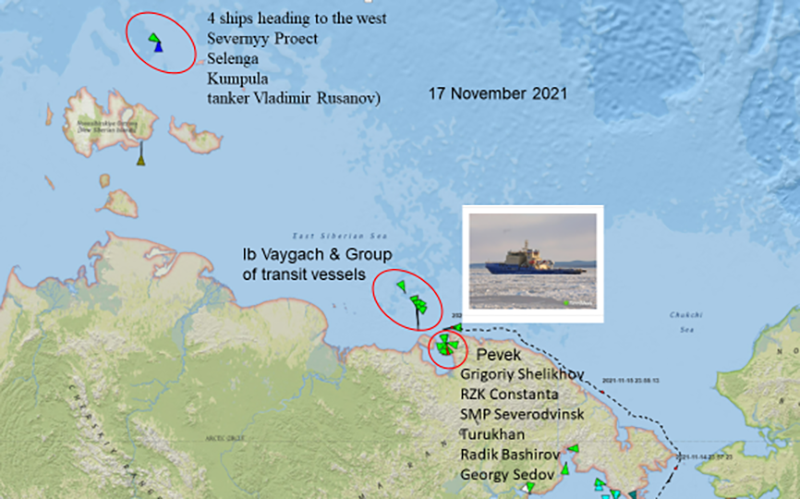

One Comment